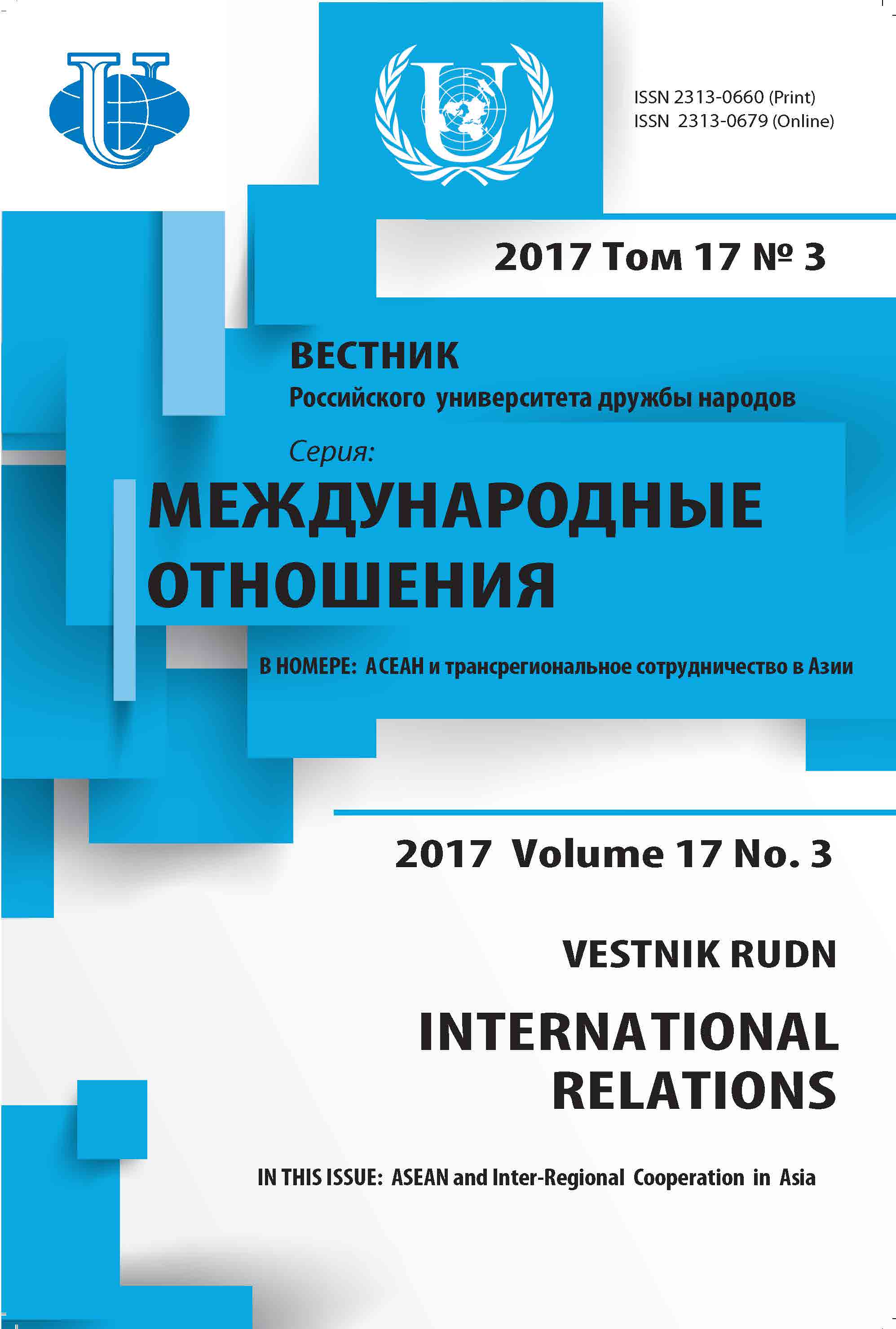THE CATCHING-UP DEVELOPMENT: THE ASEAN EXPERIENCE AND IMPORT SUBSTITUTION POLICY OF RUSSIA
- Authors: Shaldenkova TY1
-
Affiliations:
- Saint-Petersburg State University, Saint-Petersburg, Russia
- Issue: Vol 17, No 3 (2017): ASEAN and Inter-Regional Cooperation in Asia
- Pages: 539-554
- Section: INTERNATIONAL ECONOMIC RELATIONS
- URL: https://journals.rudn.ru/international-relations/article/view/16766
- DOI: https://doi.org/10.22363/2313-0660-2017-17-3-539-554
Cite item
Full Text
Abstract
The experience of catching-up development of ASEAN countries becomes valuable in the conditions of the Russian of import substitution policy and “turn to the East” in geopolitics. The objective of the paper is revealing the prospects of native catching-up development based on the analysis of theoretical aspects of the model of “flying geese” and their practical application in the ASEAN countries and Russia. The paper presents the theoretical foundations of catching-up development in the framework of the Flying Geese paradigm in the works of K. Akamatsu, R. Vernon, K. Kojima and indicates its main stages. The author reviews the measures of industrial, trade and investment policy of the ASEAN countries on the initial stages of the model and the modern aspects of their economic development. The materials of statistical reports of IMF, UNCTAD, ASEAN, the statistical data of Federal state statistics department of Russia, Federal customs department of Russia, the programs of the Russian Government in the field of import substitution are studied. The achievements and problems of implementing the programs of import substitution in agriculture, industry, IT-technologies in Russia were analyzed. The study showed the factors, hindering the domestic development in the framework of the Flying Geese paradigm. The recommendations for solving existing problems include the stimulation of aggregate demand and the development of high-tech exports. Special attention was drawn to the possibilities of applying selected elements of the model in terms of territorial heterogeneity of Russia.
About the authors
T Y Shaldenkova
Saint-Petersburg State University, Saint-Petersburg, Russia
Author for correspondence.
Email: t_shaldenkova80@mail.ru
PhD in Economics, Associate Professor of the Department of European Studies of the Faculty of International Relations of Saint-Petersburg State University
References
- Akaev, A. (2012). About the strategy of integrated modernization of the Russian economy till 2025. Voprosy ekonomiki, 4, 97—116. (in Russ.).
- Akamatsu, K. (1962). A Historical Pattern of Economic Growth in Developing Countries. Journal of Developing Economies, (1), 3—25.
- Artobolevskii, S.S., Baklanov, P.Ya. & Treivish, A.I. (2009). Space and development of Russia: a mul¬tiscale analysis. Vestnik RAN, 79 (2), 101—123. (in Russ.).
- Bulatov, A.S. (Eds.) (2007). World economy: textbook. Moscow: Yurist. (in Russ.).
- Burkett, P. & Hart-Landsberg, M. (2000). Alternative perspectives on late industrialization in East Asia: A critical survey. Review of Radical Political Economics, 32 (2), 222—264.
- Kasahara, S. (2013). The Asian developmental state and the Flying Geese paradigm. UNCTAD, 3, 1—30.
- Kojima, K. (2000). The Flying Geese Model of Asian Economic Development: Origin, theoretical extensions, and regional policy implications. Journal of Asian Economics, 11 (4), 375—401.
- Krotov, M.I. & Muntiyan, V.I. (2015). About the anti-crisis monetary strategy of the economic development of Russia. Problemy sovremennoi ekonomiki, 3, 131—144. (in Russ.).
- Kuhrt, N. & Feklyunina, V. (Eds.). (2017). Assessing Russia’s Power: A Report (King’s College London and Newcastle University).
- Mezhevich, N.M. & Shaldenkova, T.Y. (2016). Interterritorial relations in the formation of the economic space of Europe: issues of theory and practice. Saint Petersburg: Akademiya issledo¬vaniya kul'tury. Seriya «Universitetskaya nauka». (in Russ.).
- Ozawa, T. (2009). The Rise of Asia: The flying-geese theory of tandem growth and regional Agglo¬meration. Cheltenham, UK, and Northampton, MA, USA: Edward Elgar.
- Shaldenkova, T.Y. (2007). Spatial organization of the EU regional integration complex. Saint Pe¬tersburg: RGGMU. (in Russ.).
- Tarovik, E.V. (2016). Actual problems of the development of agriculture in Russia. Aktual'nye prob¬lemy obespecheniya ekonomicheskoi bezopasnosti (sbornik nauchnykh trudov). Moscow: Nauchnyj konsul'tant, 131—135. (in Russ.).
- Terry, E. (1996). An East Asian Paradigm. Atlantic Economic Journal, 24 (3), 183—198.
- The Least Developed Countries Report 2009: The States and development governance. UNCTAD. (2009). New York and Geneva: United Nations.
- Troekurova, I.S. (2004). A new stage in the “catch-up” development (on the example of the APEC member countries). Ekonomicheskii zhurnal, 7, 149—172. (in Russ.).
- Vernon, R. (1966). International Investment and International Trade in the Product Cycles. Quarterly Journal of Economics, 80 (2), 190—207.
- Vorontsovskii, A.V. & Efimova, E.G. (2016). Large open economies: typology and analysis problems. Vestnik Sankt-Peterburgskogo universiteta. Seriya 5: Ekonomika, 2, 27—51. (in Russ.).
- World Economic Outlook (2016). Subdued Demand: Symptoms and Remedies. Washington D.C.: IMF.
- World Investment Report. Investor nationality: the policy challenges. UNCTAD (2016). New York and Geneva: United Nations.











